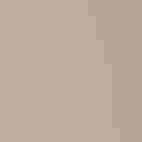Antillean Nighthawk
At a Glance
A common nesting bird on islands of the Caribbean, this nighthawk enters our area only in southern Florida. When it was first discovered there in 1941 it was considered to be only a subspecies of the Common Nighthawk, as it looks very similar; however, its voice is different. Where Antillean and Common nighthawks meet on the Florida Keys, they appear to compete and to defend territories against each other.
All bird guide text and rangemaps adapted from by Kenn Kaufman© 1996, used by permission of Houghton Mifflin Harcourt Publishing Company. All rights reserved.
Category
Nightjars, Upland Ground Birds
IUCN Status
Least Concern
Habitat
Coasts and Shorelines, Fields, Meadows, and Grasslands, Shrublands, Savannas, and Thickets
Region
Florida
Behavior
Erratic, Flap/Glide
Population
200.000
Range & Identification
Migration & Range Maps
Strictly a summer resident in Florida, present from late April to September, but winter range is poorly known.
Description
9 1/2" (24 cm). Almost identical to Common Nighthawk. A bit smaller, and females have smaller pale wing patches. Identified with certainty only by sound.
Size
About the size of a Crow, About the size of a Robin
Color
Black, Brown, Tan, White
Wing Shape
Long, Pointed, Tapered
Tail Shape
Long, Notched
Songs and Calls
A dry killy-ka-dick, often repeated.
Call Pattern
Flat
Call Type
Buzz, Chirp/Chip
Habitat
Open areas. In Florida this nighthawk is concentrated around undeveloped open ground, such as airports vacant lots, fields. In the Caribbean it inhabits semi-open terrain including open woods, fields, farmland.
Sign up for ³Ô¹ÏºÚÁÏ's newsletter to learn more about birds like the Antillean Nighthawk
Behavior
Eggs
1 or 2. White to pale cream, dotted with brown or gray. Incubation is probably by female only.
Young
Probably fed by both parents.
Feeding Behavior
Similar to that of Common Nighthawk, catching insects during high, erratic flight.
Diet
Flying insects.
Nesting
Behavior is similar to that of Common Nighthawk, but the "booming" sound during the flight display is thinner and quieter. Nest site is on bare open ground, sometimes on flat gravel roofs. No nest built; eggs laid directly on flat surface.
Conservation
Conservation Status
Probably increased in Florida through the 1970s as land on the Keys was being cleared, now declining again as land is developed.



